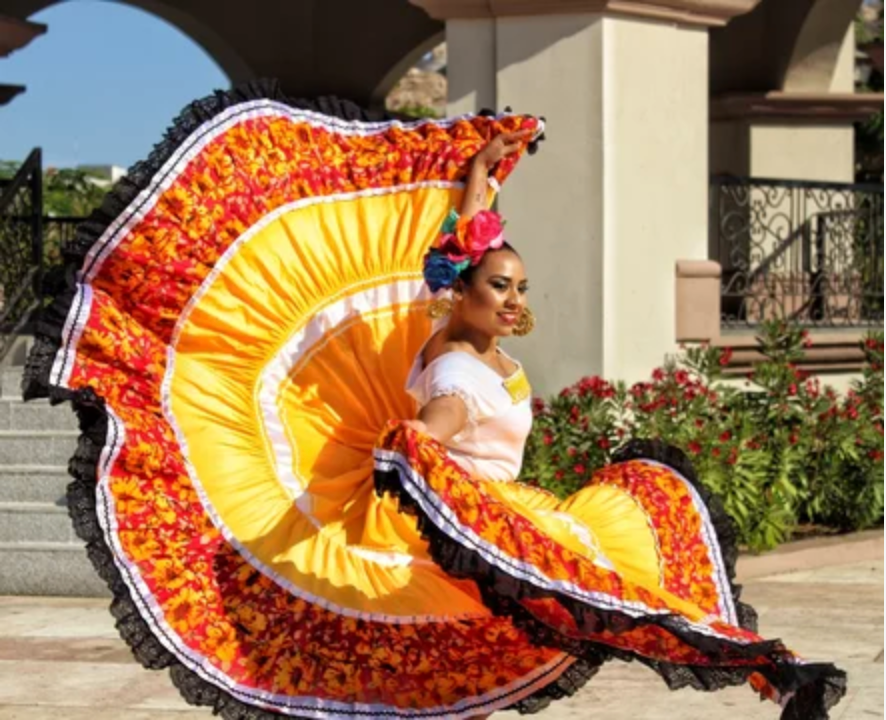Fashion and culture are two aspects of society that are closely interrelated. They are intertwined in a way that one affects the other. Fashion is not just about the clothes one wears, but it’s a form of self-expression and identity. Culture, on the other hand, is a way of life of a group of people that is expressed through their beliefs, values, and practices. In this article, we will explore how fashion and culture are connected and how they influence each other.
Introduction
Fashion has always been a part of our lives. It is an expression of our personality, our moods, and our attitudes. Our fashion choices reflect who we are and how we want to be perceived by others. Culture, on the other hand, is the sum of all the beliefs, values, customs, and traditions that a group of people share. It encompasses everything from language and religion to food and art. Fashion and culture are closely linked because fashion is a reflection of the culture it belongs to.
In this article, we will explore the relationship between fashion and culture. We will discuss how fashion is influenced by culture and how it, in turn, influences culture. We will also look at the impact that fashion has on society and how it can be used to express social and political messages.
Fashion and Culture: A Two-way Street
Fashion and culture have a symbiotic relationship, meaning they influence each other in a two-way street. Culture shapes fashion by providing inspiration for designers, materials, and colors. At the same time, fashion shapes culture by reflecting the values and attitudes of the society in which it is created.
The Influence of Culture on Fashion
Culture has a significant influence on fashion. It provides inspiration for designers, who draw on the traditions, customs, and materials of culture to create new styles. For example, designers in the fashion industry have drawn inspiration from African prints, Japanese kimonos, Indian sarees, and Native American beadwork, just to name a few.
In addition to inspiration, culture also influences fashion through the use of materials and colors. For example, the traditional dress of the Maasai people in Africa is made of bright, bold colors and intricate beadwork. This has inspired many fashion designers to incorporate bright colors and beadwork into their designs.
The Influence of Fashion on Culture
Fashion also has a significant influence on culture. It reflects the values and attitudes of the society in which it is created. For example, in the 1960s, the mini-skirt became popular. This reflected the changing attitudes toward women’s roles in society and their desire for greater freedom and liberation.
Fashion can also be used as a way of expressing social and political messages. For example, the punk movement in the 1970s used fashion as a way of expressing their dissatisfaction with mainstream society. This was reflected in their clothing, which often featured ripped and torn fabrics, safety pins, and provocative slogans.
Fashion as a Means of Self-Expression
Fashion is a powerful means of self-expression. It allows individuals to express their identity, personality, and beliefs through their clothing choices. For example, punk fashion was a way for young people to express their rebellion against mainstream society.

Fashion can also be used to express cultural identity. For example, many people wear traditional clothing as a way of celebrating their heritage and culture. This can be seen in festivals and cultural events where people wear traditional clothing from their country of origin.
Fashion and Identity
Fashion and identity are closely linked, with clothing and accessories often serving as a means of expressing one’s personal identity, values, and beliefs. What we wear can convey information about our social status, cultural background, and even our political beliefs.
Fashion can also be used as a tool for projecting a particular image or identity. For instance, individuals may choose to dress in a certain style to fit in with a particular social group, or to express their affiliation with a particular subculture or movement. Similarly, individuals may use fashion to signal their wealth, taste, or sophistication, as certain clothing brands and styles have become associated with luxury and exclusivity.
However, it’s important to note that fashion can also be a source of tension and conflict, particularly when it comes to issues of cultural appropriation and identity. For instance, when individuals from dominant cultures adopt the dress and traditions of marginalized communities, it can be seen as disrespectful and exploitative, perpetuating harmful power dynamics and erasing the cultural significance of these practices.
In recent years, there has been a growing awareness of the importance of cultural sensitivity and appropriation within the fashion industry. Many designers and brands are now working to create more diverse and inclusive collections that draw inspiration from a variety of cultural traditions and perspectives, while still respecting the cultural significance of these practices.
Overall, the relationship between fashion and identity is complex and multifaceted. While clothing and accessories can serve as a means of expressing one’s personal identity and projecting a particular image or affiliation, it’s important to approach fashion with cultural sensitivity and awareness, recognizing the potential impact of our clothing choices on ourselves and others.
Fashion and Social Class
Fashion can also be used to signify social class. In many societies, certain clothing styles are associated with wealth and privilege. For example, expensive designer clothing and accessories are often associated with the upper class, while more affordable clothing brands are associated with the middle and lower classes.

Fashion has been used throughout history as a way of reinforcing social hierarchies. For example, during the Renaissance period, sumptuary laws were put in place to regulate what people could wear based on their social class. These laws dictated what colors, fabrics, and styles were acceptable for people of different social classes.
Fashion and Gender
Fashion also plays a significant role in shaping gender identities. Clothing styles have traditionally been divided into “masculine” and “feminine” categories. For example, women’s clothing has traditionally been more form-fitting and decorative, while men’s clothing has been more functional and plain.
However, in recent years, there has been a growing trend towards gender-neutral fashion. This involves clothing that is designed to be worn by both men and women, without conforming to traditional gender norms. Gender-neutral fashion is a way of challenging gender stereotypes and promoting equality.
Fashion and Sustainability
Fashion has a significant impact on the environment. The fashion industry is one of the largest polluters in the world, producing massive amounts of waste and contributing to the depletion of natural resources.
However, there has been a growing trend towards sustainable fashion. This involves clothing that is produced using eco-friendly materials and manufacturing processes. Sustainable fashion is a way of promoting environmental awareness and responsibility within the fashion industry.
Read also Sustainable Fashion: A Path Towards a Greener Future
Fashion and Globalization
Globalization has had a significant impact on the fashion industry. It has led to the spread of fashion trends and styles across the world, creating a global fashion culture.
However, globalization has also led to the exploitation of workers in the fashion industry, particularly in developing countries. Many fast fashion brands use sweatshop labor to produce their clothing, paying workers low wages and subjecting them to poor working conditions.
FAQs
Q1. How does fashion reflect cultural identity?
A1. Fashion reflects cultural identity by drawing inspiration from the traditions, customs, and materials of culture. Many people also wear traditional clothing as a way of celebrating their heritage and culture.
Q2. How does fashion influence social class?
A2. Fashion can signify social class by associating certain clothing styles with wealth and privilege. Expensive designer clothing and accessories are often associated with the upper class, while more affordable clothing brands are associated with the middle and lower classes.
Q3. How does sustainable fashion promote environmental awareness?
A3. Sustainable fashion promotes environmental awareness by using eco-friendly materials and manufacturing processes. It is a way of reducing waste and minimizing the environmental impact of the fashion industry.
Q4. What is the impact of globalization on the fashion industry?
A4. Globalization has led to the spread of fashion trends and styles across the world, creating a global fashion culture. However, it has also led to the exploitation of workers in the fashion industry, particularly in developing countries.
Q5. How has fashion been used to express social and political messages?
A5. Fashion has been used as a way of expressing social and political messages throughout history. For example, the punk movement in the 1970s used fashion as a way of expressing their dissatisfaction with mainstream society.
Q6. What is gender-neutral fashion?
A6. Gender-neutral fashion involves clothing that is designed to be worn by both men and women, without conforming to traditional gender norms. It is a way of challenging gender stereotypes and promoting equality.
Conclusion
Fashion and culture are inextricably linked, with fashion playing a significant role in shaping cultural identity, social class, gender norms, and environmental sustainability. Throughout history, fashion has been used as a means of expressing individuality, as well as reflecting and reinforcing cultural norms and values.
However, the fashion industry has also faced significant challenges, particularly in regards to its environmental impact and treatment of workers. The growing trend towards sustainable fashion and ethical manufacturing processes is a positive step towards promoting greater environmental responsibility and social justice within the fashion industry.
Overall, fashion is a complex and multifaceted aspect of culture that reflects and shapes our identities, beliefs, and values. By understanding the ways in which fashion intersects with social class, gender, sustainability, and globalization, we can gain a deeper appreciation for the role that fashion plays in shaping our world.
